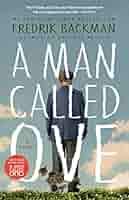In Fredrik Backman‘s acclaimed novel, Ove“>A Man Called Ove, the theme of family emerges as a central pillar shaping the narrative and the protagonist’s evolution. The story unfolds around Ove, a curmudgeonly yet endearing character whose life is intricately influenced by his relationships and interactions with family, both biological and chosen. Through a meticulous exploration of Ove’s past and present, Backman deftly illustrates how familial bonds, responsibilities, and losses mold the contours of his character. This article delves into the multifaceted role of family within the novel, examining how these connections drive the plot forward and contribute to the nuanced portrayal of Ove’s journey from isolation to community integration. By analyzing the dynamics of Ove’s relationships, we gain a deeper understanding of the transformative power of family in reshaping an individual’s identity and worldview.
Exploring Familial Relationships and Their Impact on Oves Character Development
In Fredrik Backman’s novel, familial relationships play a pivotal role in shaping Ove’s character, offering a profound exploration of how connections with family members can influence an individual’s emotional landscape and personal growth. Ove’s relationship with his father is central to his early development, instilling in him a strong work ethic and a sense of integrity. These traits, while admirable, also contribute to his rigidity and difficulty in adapting to change. The early loss of his father leaves Ove grappling with grief, yet it is this very loss that solidifies his commitment to living a life of principle and order.
- Father’s Influence: Ove’s father’s unwavering dedication to honesty and hard work becomes the foundation upon which Ove builds his own life, shaping his interactions with the world.
- Loss and Grief: The death of his father acts as a catalyst for Ove’s isolation, pushing him further into a world governed by rules and routines as a means of coping with his sorrow.
As the narrative progresses, Ove’s interactions with his wife, Sonja, reveal another layer of his character development. Her warmth and optimism serve as a counterbalance to Ove’s stern demeanor, gradually opening him up to new experiences and emotions. This dynamic showcases the transformative power of love and companionship, highlighting how familial bonds can challenge and enrich an individual’s perspective.
- Sonja’s Impact: Sonja’s influence helps Ove to soften his rigid worldview, allowing him to embrace vulnerability and empathy.
- Companionship: Through his relationship with Sonja, Ove learns the value of connection and support, which ultimately reshapes his understanding of community and belonging.

The Influence of Intergenerational Dynamics on Personal Growth in A Man Called Ove
In A Man Called Ove, Fredrik Backman masterfully illustrates how intergenerational dynamics shape the personal growth of the protagonist, Ove. The relationships between Ove and the younger characters, particularly with the vivacious Parvaneh and her family, serve as catalysts for his transformation. These interactions highlight how the wisdom and experiences of the older generation can blend with the energy and perspectives of the younger, creating a powerful synergy that fosters growth and understanding. Ove’s gruff exterior begins to soften as he navigates these dynamics, revealing layers of vulnerability and resilience.
- Mentorship: Ove inadvertently becomes a mentor to the younger generation, offering practical skills and life lessons that extend beyond the immediate narrative.
- Empathy: The younger characters, in turn, teach Ove the value of empathy and emotional openness, challenging his preconceived notions about connection and community.
- Legacy: The interplay between these generations underscores the importance of legacy, as Ove finds a renewed sense of purpose in imparting his values and stories to those who come after him.
This exchange between generations in the novel demonstrates how personal growth is not a solitary journey but a shared path, where the old and the new converge to enrich each other’s lives. The intergenerational relationships in Ove’s life are not just plot devices; they are fundamental to his development, showcasing the profound impact family—both chosen and biological—can have on an individual’s evolution.

Analyzing Family as a Catalyst for Oves Emotional Transformation
Fredrik Backman’s novel, A Man Called Ove, presents a poignant exploration of how familial connections serve as a pivotal force in the emotional evolution of its protagonist, Ove. Initially portrayed as a curmudgeonly and solitary figure, Ove’s interactions with his unconventional “family” ignite a profound transformation. Family, in this context, extends beyond blood relations, encompassing neighbors and newfound friends who gradually penetrate Ove’s hardened exterior.
- Compassionate Engagement: The persistent kindness of Parvaneh and her family introduces warmth into Ove’s life, challenging his entrenched cynicism.
- Shared Responsibilities: The communal efforts in the neighborhood provide Ove with a renewed sense of purpose, counteracting his feelings of obsolescence.
- Emotional Support: The unspoken understanding and empathy from those around him gradually allow Ove to confront his grief and past trauma.
Through these dynamics, Backman deftly illustrates how familial bonds, whether forged through blood or circumstance, can act as a catalyst for personal change. As Ove’s story unfolds, it becomes evident that the love and acceptance from his chosen family not only alter his outlook but also reinvigorate his will to live, underscoring the profound impact of community and connection.

Recommendations for Interpreting Family Themes in A Man Called Ove
When exploring the familial aspects within A Man Called Ove, it is crucial to delve into the intricate dynamics that shape Ove’s interactions and personal growth. The novel offers a nuanced portrayal of how familial bonds, both biological and chosen, can profoundly influence an individual’s journey. To interpret these themes effectively, consider the following approaches:
- Character Relationships: Examine the relationships Ove forms with those around him, especially the unexpected family he builds. Notice how these connections provide him with a renewed sense of purpose and community.
- Symbolism and Metaphors: Pay attention to recurring symbols, such as the Saab car and Ove’s house, which represent stability and legacy. These symbols can serve as metaphors for the family structures Ove values.
- Emotional Evolution: Track Ove’s emotional journey from isolation to acceptance, highlighting the pivotal moments where family-like interactions catalyze change. This transformation underscores the theme of family as a catalyst for healing and redemption.
By focusing on these elements, readers can gain a deeper understanding of how family, in its various forms, serves as a cornerstone in Ove’s life, ultimately illustrating the profound impact of human connection.
